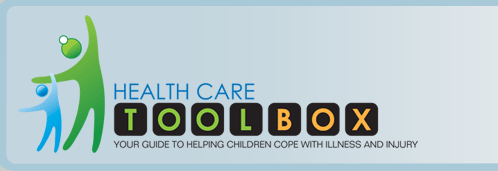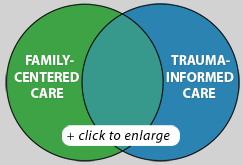– a trauma surgeon
Implementing Trauma-Informed Pediatric Care can address other important goals shared by many pediatric health care settings, such as
- providing family-centered care
- improving the quality of care
- meeting regulatory or accreditation standards
- maximizing patient satisfaction
Implementing Trauma-Informed Pediatric Care will support and strengthen efforts to implement Family-Centered Care.
Pediatric providers familiar with implementing family-centered care will note many areas of overlap between family-centered and trauma-informed care.
Trauma-informed care brings a distinct focus on awareness of traumatic stress related to medical events, but also includes a very central role for involving families and promoting family strengths.
Many key professional groups have identified family-centered care as key to excellent pediatric medical care (go to .pdf from Institute for Family-Centered Care).
Click here for guidance on family-centered care from leading pediatric health care organizations.
family's experience of care.
-From the AAP Committee on Hospital Care
The Institute of Medicine’s landmark report "Crossing the Quality Chasm: A New Health System for the 21st Century" (2001) drew attention to providing emotional support and relieving fear and anxiety as key to quality patient-centered health care.
Trauma-Informed Pediatric Care can promote health care facilities’ existing efforts to improve the quality of care, meet regulatory and accreditation requirements, and increase patient and family satisfaction with care.
- Optimizing pain management to reduce distress also addresses JCAHO standards for appropriate assessment and management of pain.
- Maximizing continuity of care for patient emotional needs addresses the IOM’s goals for high quality patient-centered care.
- Clear communication between patients / families and the health care team is key to improving patient safety and reducing medical errors.
- Key elements of Trauma-Informed Pediatric Care can be implemented as part of formal quality improvement initiatives.




